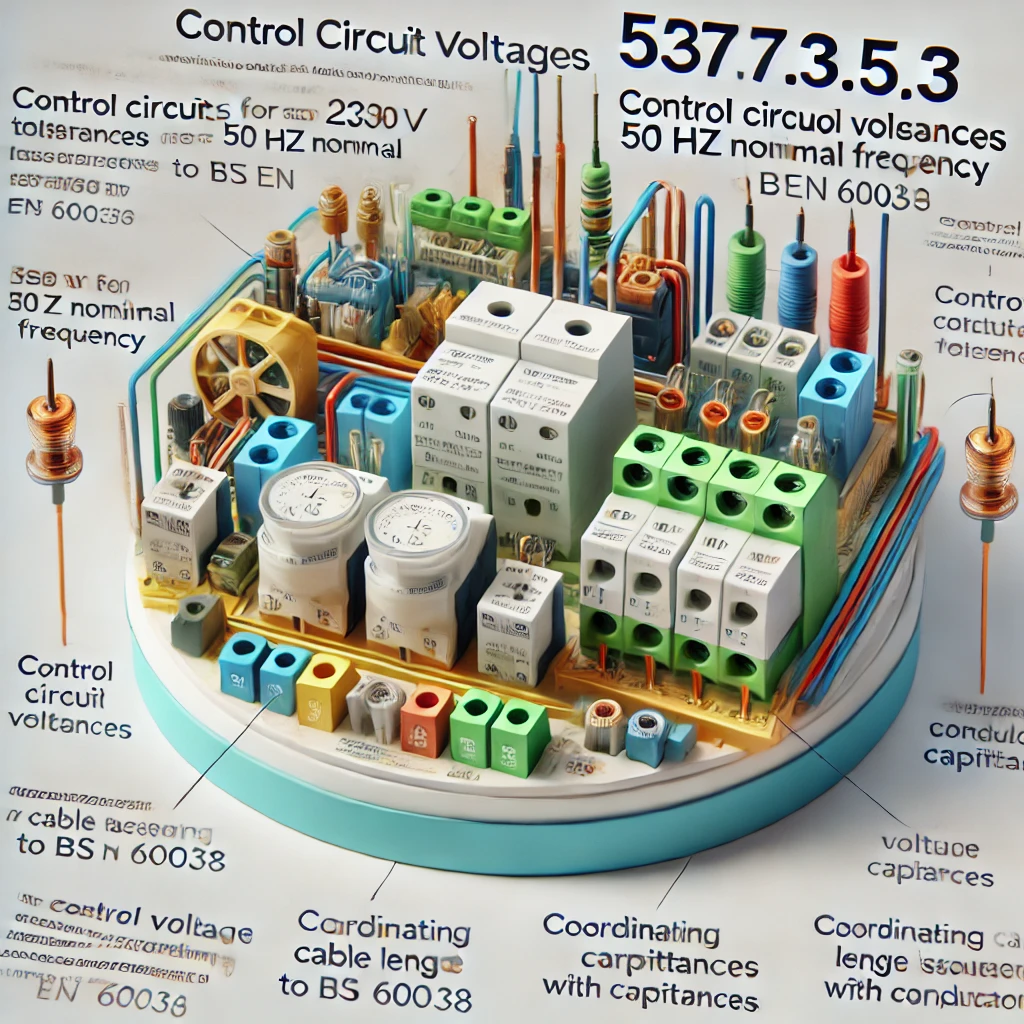What is the Maximum Nominal Voltage for Control Circuits in AC Supply According to BS 7671?
Regulation 557.3.5.3 AC Supply: The nominal voltage of control circuits shall preferably not exceed 230 V for circuits with 50 Hz nominal frequency and 277 V for circuits with 60 Hz nominal frequency.

OW London Electrician and Home Automation Engineers Team
What is the Maximum Nominal Voltage for Control Circuits in AC Supply According to BS 7671?
Regulation 557.3.5.3 states:
"The nominal voltage of control circuits shall preferably not exceed:
(i) 230 V for circuits with 50 Hz nominal frequency
(ii) 277 V for circuits with 60 Hz nominal frequency
respectively, taking into account voltage tolerances according to BS EN 60038.NOTE: The dimensioning of cable length with respect to the conductor capacitances, e.g. connection to a limit switch, needs to be coordinated with the selected relays or solenoid valves. The standing voltage caused by high conductor capacitances may impair the switching off of relays or solenoid valves."
This regulation specifies the maximum nominal voltages that control circuits should ideally not exceed. For circuits operating at a frequency of 50 Hz, the maximum nominal voltage should be 230 volts. For circuits operating at a frequency of 60 Hz, the maximum nominal voltage should be 277 volts. These limits are set to ensure safety and compatibility with standard voltage tolerances defined in BS EN 60038.
Key Points:
- 230 V Limit: For 50 Hz circuits, the maximum nominal voltage should be 230 volts.
- 277 V Limit: For 60 Hz circuits, the maximum nominal voltage should be 277 volts.
- Voltage Tolerances: These values should account for voltage tolerances to ensure consistent and safe operation.
- Conductor Capacitance: When designing circuits, consider the cable length and its capacitance, as high capacitance can affect the performance of connected devices like relays and solenoid valves.

Frequently Asked Questions
Q: Why are there different voltage limits for 50 Hz and 60 Hz circuits?
A: The different voltage limits (230 V for 50 Hz and 277 V for 60 Hz) are set because electrical systems around the world operate at different standard frequencies, and these limits ensure compatibility and safety within those systems. (Regulation 557.3.5.3)
Q: What is BS EN 60038?
A: BS EN 60038 is a standard that specifies the nominal voltages for public electricity supply systems in Europe. It ensures that electrical equipment operates safely and reliably within these specified voltage ranges. (Regulation 557.3.5.3)
Q: What are the implications of exceeding these nominal voltages?
A: Exceeding the specified nominal voltages can lead to increased wear and tear on electrical components, potential safety hazards, and reduced reliability of the control circuits. It may also cause malfunctioning of connected devices due to voltage spikes or high capacitance effects. (Regulation 557.3.5.3)
Q: What is the significance of the note regarding conductor capacitance?
A: The note highlights the importance of considering the capacitance of the conductors when designing circuits. High conductor capacitance can lead to a standing voltage that may prevent relays or solenoid valves from switching off properly, causing operational issues or potential safety hazards. (Regulation 557.3.5.3)
By adhering to these guidelines, electrical systems can maintain safety, reliability, and compatibility with standard practices.
What users Saying
Discover what our customers think about our services. Their feedback reflects our commitment to delivering exceptional service and expert solutions for all electrical and security needs.

